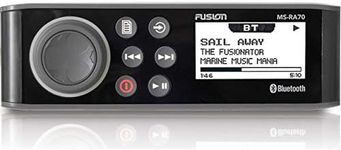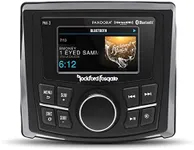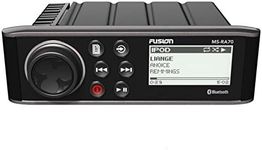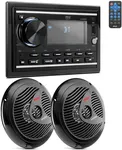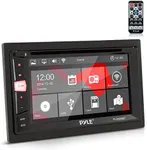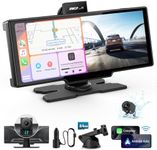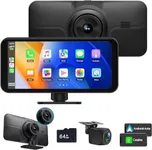Buying Guide for the Best Marine Stereos
Choosing the right marine stereo can significantly enhance your boating experience by providing high-quality sound and entertainment while you're out on the water. When selecting a marine stereo, it's important to consider several key specifications to ensure you get a product that meets your needs and withstands the marine environment. Here are the key specs to look at and how to navigate them.Waterproof RatingThe waterproof rating indicates how well the stereo can resist water. This is crucial for marine environments where the stereo will be exposed to splashes, rain, and possibly even submersion. Waterproof ratings are often given in IP (Ingress Protection) codes, such as IPX5 or IPX7. IPX5 means the stereo can handle water jets, while IPX7 means it can be submerged in water up to 1 meter for 30 minutes. If you expect heavy exposure to water, go for a higher IP rating like IPX7.
UV ResistanceUV resistance measures how well the stereo can withstand exposure to sunlight without degrading. This is important because prolonged exposure to UV rays can cause materials to fade, crack, or become brittle. Look for stereos that specifically mention UV resistance or are made from UV-resistant materials. If your boat is often in direct sunlight, prioritize this feature to ensure longevity.
Power OutputPower output, measured in watts, determines how loud and clear the stereo can play music. Higher wattage means more powerful sound, which is important for overcoming engine noise and wind while on the water. Stereos typically range from 20 watts to over 100 watts per channel. If you enjoy loud music or have a larger boat, opt for higher wattage. For smaller boats or quieter listening, lower wattage may suffice.
Connectivity OptionsConnectivity options refer to the ways you can connect your devices to the stereo, such as Bluetooth, USB, AUX, and Wi-Fi. Bluetooth is great for wireless streaming from smartphones, while USB and AUX ports allow for wired connections. Some stereos also offer Wi-Fi for internet radio and streaming services. Consider how you plan to use the stereo and choose one with the connectivity options that match your devices and preferences.
Display VisibilityDisplay visibility is about how easily you can read the stereo's screen in various lighting conditions, especially bright sunlight. A good marine stereo should have a high-contrast, anti-glare display that remains readable in direct sunlight. If you often boat during the day, prioritize a stereo with a clear, visible display to ensure you can easily control your music and settings.
Durability and Build QualityDurability and build quality refer to how well the stereo is constructed to withstand the harsh marine environment, including saltwater, humidity, and physical impacts. Look for stereos made with corrosion-resistant materials and robust construction. If you frequently encounter rough waters or harsh conditions, a more durable stereo will ensure reliable performance and longevity.
Audio QualityAudio quality is about how good the stereo sounds, including clarity, bass, and overall sound balance. High-quality audio can make your boating experience more enjoyable. Look for stereos with features like equalizers, preamp outputs, and support for high-definition audio formats. If you're an audiophile or simply enjoy great sound, prioritize audio quality in your selection.





